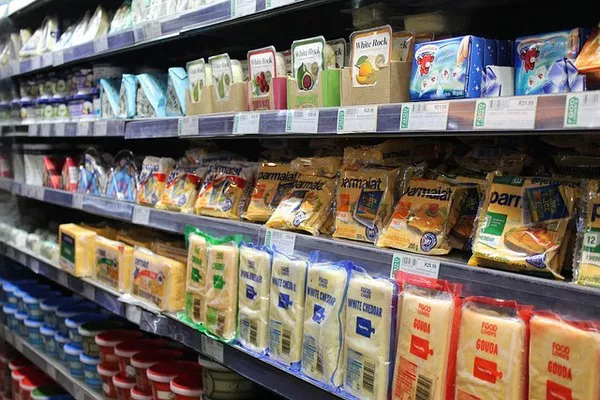Refrigeration is an indispensable technology that has revolutionized the way we preserve and store perishable goods, ensuring their availability and safety. However, traditional refrigerants like hydrofluorocarbons (HFCs) have been found to contribute significantly to global warming and ozone depletion. As a result, the search for more sustainable alternatives has led to the resurgence of CO2 refrigeration. In this article, we explore the inner workings of CO2 refrigeration and how it offers a more environmentally friendly solution for cooling needs.
The Environmental Impact of Traditional Refrigerants
For decades, chlorofluorocarbons (CFCs) and HFCs have been the primary refrigerants used in cooling systems due to their high efficiency and stability. However, these synthetic compounds are potent greenhouse gases and contribute to global warming when released into the atmosphere. The Kyoto Protocol and subsequent agreements have called for the phase-out of many of these substances, driving the quest for greener refrigeration options.
Enter CO2 Refrigeration
Carbon dioxide (CO2) has garnered renewed attention as a refrigerant due to its unique properties that make it environmentally friendly. As a natural substance, CO2 is abundant, non-toxic, and does not contribute to ozone depletion. It has a low global warming potential (GWP) of 1, making it a much more sustainable alternative to traditional refrigerants, which can have GWPs in the thousands.
Working Principle of CO2 Refrigeration
CO2 refrigeration systems operate on the same fundamental principles as traditional vapor-compression refrigeration. These systems consist of four main components: the compressor, condenser, expansion valve, and evaporator. Let’s delve into the process step by step:
Compression: The refrigeration cycle begins with the CO2 gas being compressed by the compressor, raising its pressure and temperature significantly. The compressed CO2 then enters the condenser.
Condensation: In the condenser, the high-pressure CO2 gas releases heat to the surrounding environment, causing it to condense into a high-pressure liquid. This process is exothermic and crucial in dissipating the heat generated during compression.
Expansion: The high-pressure liquid CO2 passes through an expansion valve, where its pressure is drastically reduced, causing it to rapidly expand. As the pressure drops, the temperature of the CO2 also decreases.
Evaporation: The now low-pressure, low-temperature CO2 enters the evaporator, where it absorbs heat from the surroundings (e.g., the refrigerated space). This heat absorption causes the CO2 to evaporate back into a low-pressure gas.
Re-compression: The low-pressure CO2 gas is then sucked back into the compressor to start the cycle anew.
Advantages of CO2 Refrigeration
Environmental Friendliness: CO2 refrigeration systems have a minimal impact on the environment. As mentioned earlier, CO2 has a low GWP and does not contribute to ozone depletion, making it an eco-friendly choice.
Energy Efficiency: CO2 refrigeration systems boast excellent thermodynamic properties, resulting in enhanced energy efficiency. The system’s higher heat transfer capabilities allow for more effective cooling and reduced energy consumption compared to some traditional refrigerants.
Cost-Effectiveness: Although initial installation costs may be higher due to the specific equipment required, the energy savings and lower maintenance costs over the long term make CO2 refrigeration a cost-effective option for commercial and industrial applications.
Wide Range of Applications: CO2 refrigeration is versatile and can be used in various cooling applications, including supermarkets, cold storage facilities, food processing, and industrial cooling.
Challenges and Mitigation
While CO2 refrigeration offers numerous advantages, it also comes with specific challenges that need to be addressed for widespread adoption.
High Operating Pressures:
CO2 refrigeration systems operate at significantly higher pressures than traditional refrigerants, necessitating the use of specialized equipment and materials. However, advancements in engineering and technology have led to the development of robust systems that can handle these pressures safely.
Energy Consumption in Warm Climates:
In warmer climates, CO2 refrigeration systems may experience reduced energy efficiency due to the need for higher compression ratios. Implementing strategies like parallel compression or ejectors can mitigate this issue and improve performance.
Training and Expertise:
Technicians and engineers responsible for maintaining and servicing CO2 refrigeration systems require specialized training and knowledge due to the unique characteristics of CO2. Increased awareness and education in the industry can help address this challenge.
Conclusion
CO2 refrigeration presents a promising solution to combat the environmental impacts of traditional refrigerants and mitigate climate change. As technology and expertise continue to advance, CO2 refrigeration systems will become more accessible and affordable, offering a sustainable and efficient cooling option for various applications. Embracing this eco-friendly approach not only ensures compliance with environmental regulations but also paves the way for a greener and more sustainable future for refrigeration technology.

